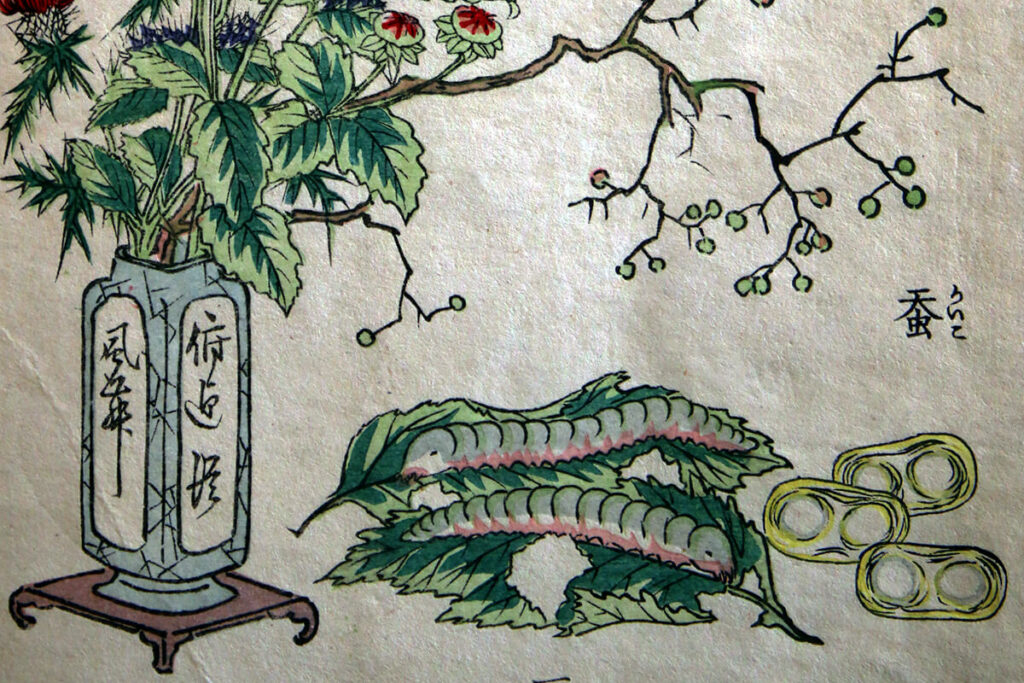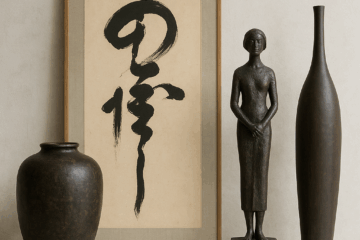The dragonfly, an insect apart
In Japanese art, the tonbo 蜻蛉 dragonfly is considered a symbol of good luck, resurrection and transformation.... a "special" insect that has been depicted in a variety of media.
From prints to weavings and the warrior arts, artists have often used the dragonfly for its symbolism, but also to highlight its shapes, its "design": the insect's delicate wings and moving forms were ideal for adding a touch of poetry and grace to their work.
A fine example is this print by Hokusai depicting a dragonfly floating above bellflowers... a symbol of attraction, charm and flattery... a perfect pairing for Valentine's Day!
Tsuba and dragonflies: a story that goes back six centuries...
For the samurai, the dragonfly represented loyalty, courage and determination... and what better way to represent this highly symbolic insect than with a tsuba.
Tsuba are sword guards, pieces of metal that have several roles: they protect the samurai's hand, they act as a weight for the sword, and they also serve as decoration.
Artists in Japan during the Edo period (1603-1868) created tsuba decorated with dragonfly motifs to symbolize loyalty to one's clan and, above all, courage.
Dragonflies are part of the decorative bestiary of tsuba, and although they are sometimes depicted in relief (taka bori...), they are very often represented in the form of apertures (sukashi bori) to reproduce the movements and delicate wings of the insect through a play of transparencies (cf. the principle of complementarity between full and empty). the principle of complementarity between full and empty).
A fine example is this ko-tosho tsuba, in which a stylized dragonfly comes to feel the thread of the blade passing through the nakago ana... symbolizing the transmission of courage to the sword-wielder.
Note also the body of the dragonfly stylized by a ichi 一: the first, the best... of the samurai.

Nineteenth-century art and the place given to insects
We're talking about dragonflies, but other insects played an important role in Japanese art, especially during the Edo period (1603-1868). Artists of this period incorporated them into their work, using their shapes and colors to create poetic and symbolic scenes.... each insect having its own characteristics.
Crickets, butterflies, spiders... were particularly popular and were often used to represent the ephemeral life and beauty of nature.

In prints, insects were often depicted in scenes of everyday life, such as seaside walks, gardens and parks. They were also included in silk paintings to represent the seasons, the beauty of nature and emotions. Insects have become a key element in Japanese printmaking, where artists (as in the works of Takizawa Kiyoshi) have explored different techniques to capture the texture and movements of our little housemates.

The representation of insects, through the multiplicity of their shapes and colors, supports a statement, a message... but above all appeals to the emotions and feelings of those who observe them...
(cover image: Kawari kabuto topped by an imposing dragonfly restored by Hiromichi Miura - Coll. MET)





